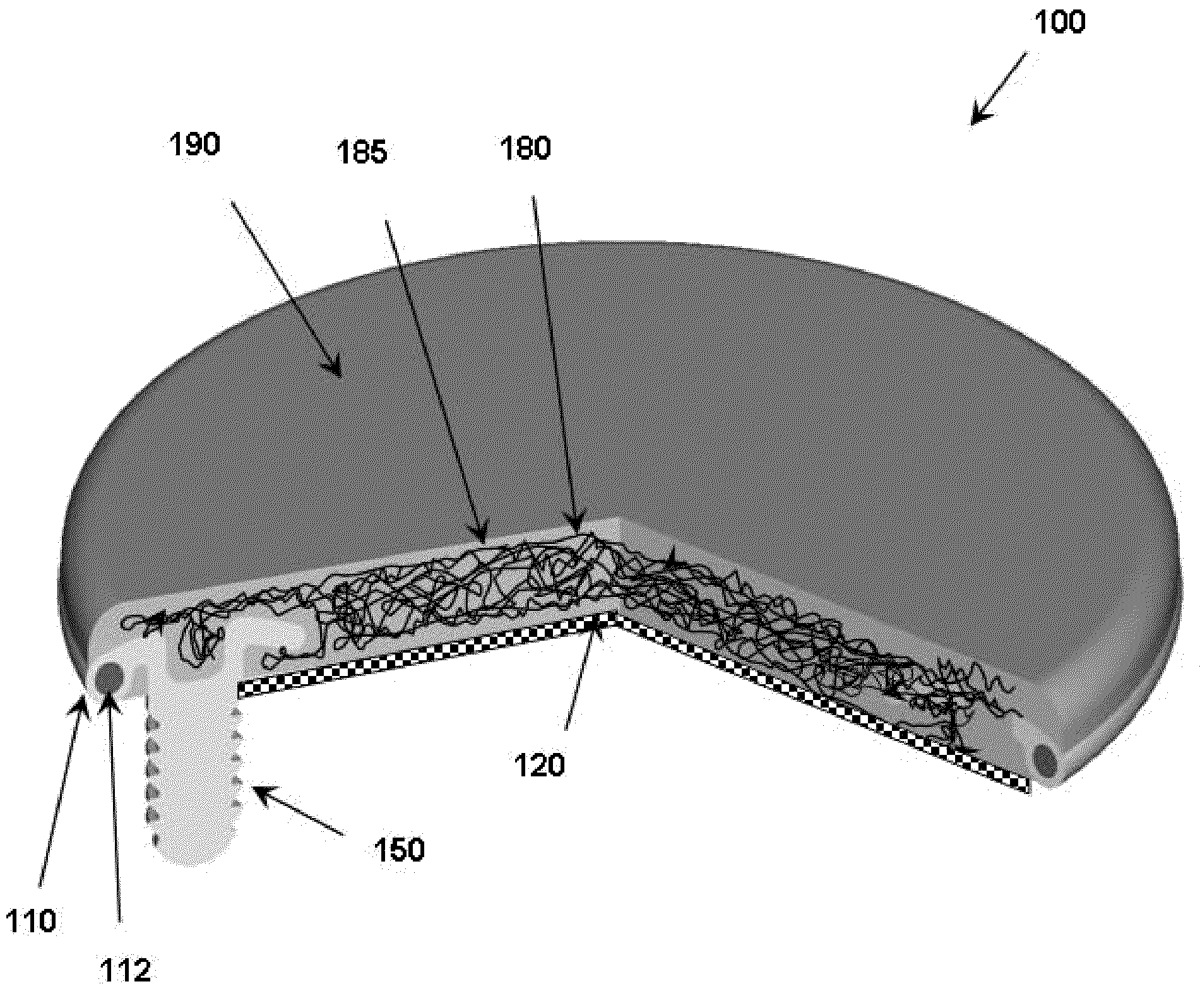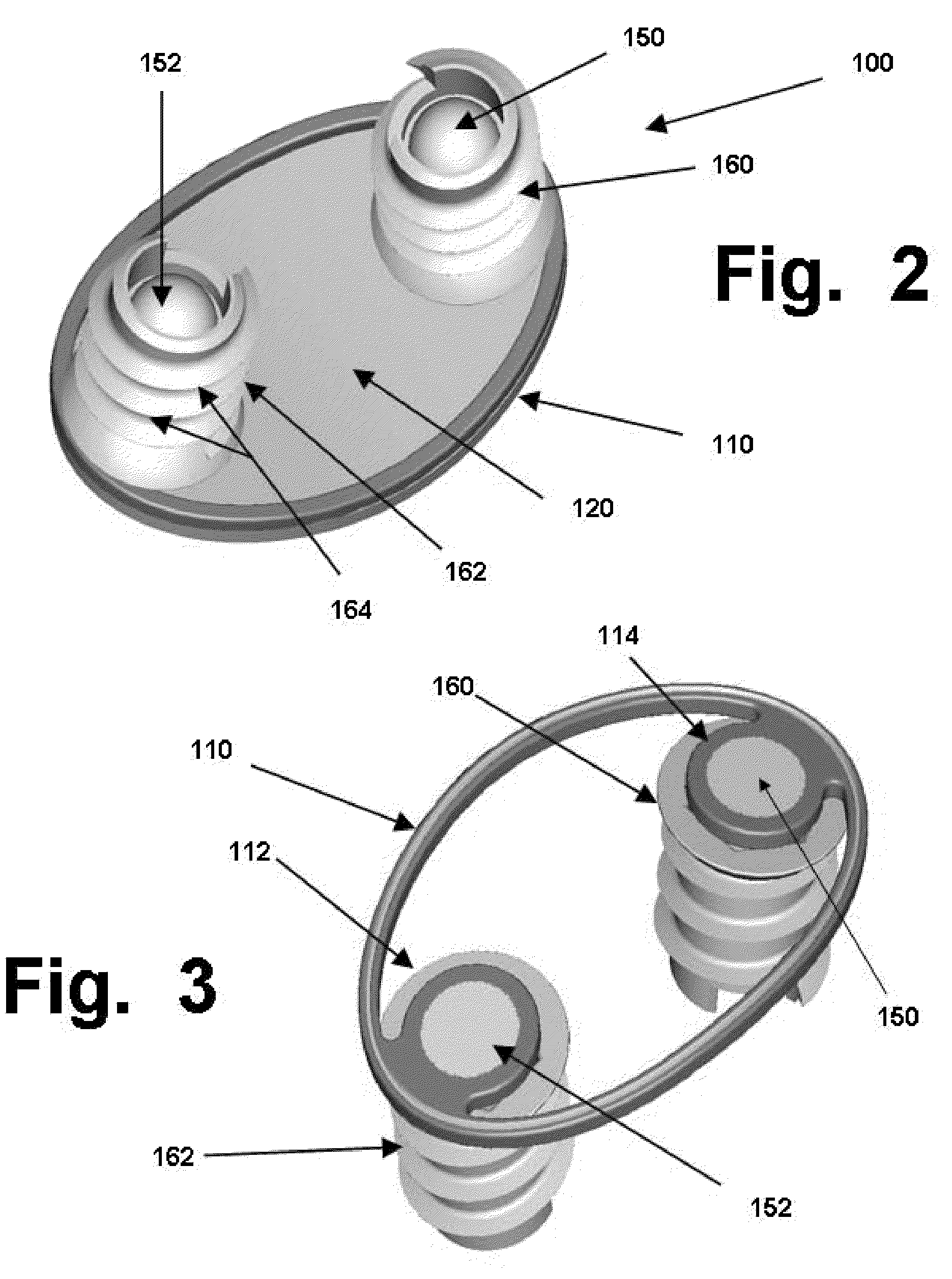Anchoring systems and interfaces for flexible surgical implants for replacing cartilage
a flexible surgical implant and anchoring system technology, applied in the field of medicine and surgery, can solve the problems of not being able to create reliably lasting repairs in the shoulder, not being able to replace hyaline cartilage in load-bearing joints, and not being able to perform operations, so as to minimize tissue damage
- Summary
- Abstract
- Description
- Claims
- Application Information
AI Technical Summary
Benefits of technology
Problems solved by technology
Method used
Image
Examples
Embodiment Construction
[0053]As summarized above, this invention discloses new designs for flexible surgical implants that can be used for minimally-invasive replacement of damaged cartilage in mammalian joints, such as knees, shoulders, etc. These implants use combinations of: (1) at least one first part made from a shape-memory material, which will be used for purposes referred to herein as “anchoring” (other terms, such as securing, affixing, stabilizing, etc., can be used if desired); and, (2) at least one second part, made from a polymer material that has a desired performance trait.
[0054]In the embodiments discussed herein, replacement of damaged cartilage is the primary purpose of the implants. Accordingly, the polymer material used in such implants preferably should comprise a synthetic hydrogel that has been given a negative electrical charge on its surface, to emulate the natural charge density of natural and healthy cartilage. However, the teachings herein can be adapted for creating polymeric ...
PUM
 Login to View More
Login to View More Abstract
Description
Claims
Application Information
 Login to View More
Login to View More - R&D
- Intellectual Property
- Life Sciences
- Materials
- Tech Scout
- Unparalleled Data Quality
- Higher Quality Content
- 60% Fewer Hallucinations
Browse by: Latest US Patents, China's latest patents, Technical Efficacy Thesaurus, Application Domain, Technology Topic, Popular Technical Reports.
© 2025 PatSnap. All rights reserved.Legal|Privacy policy|Modern Slavery Act Transparency Statement|Sitemap|About US| Contact US: help@patsnap.com



